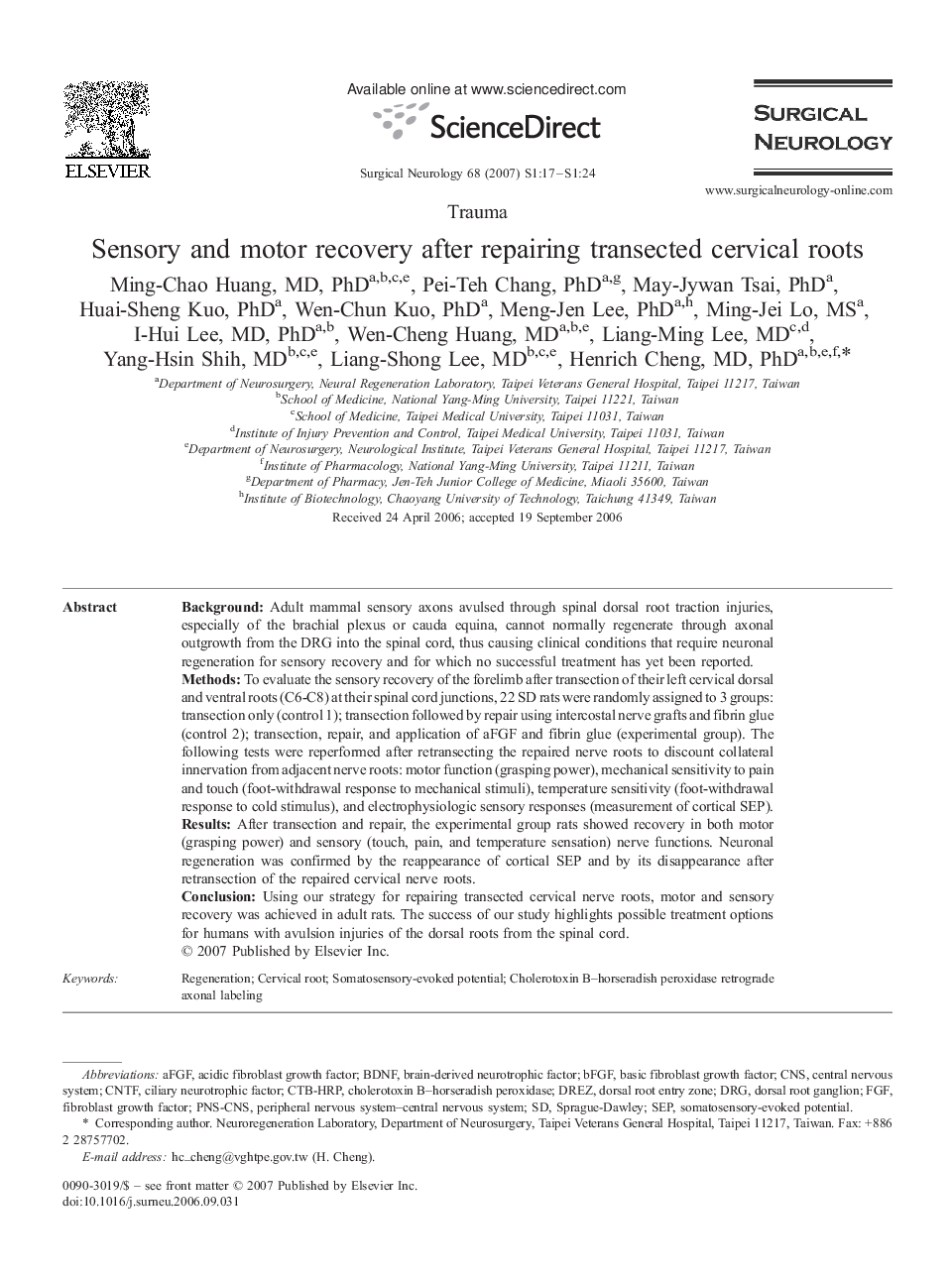| Article ID | Journal | Published Year | Pages | File Type |
|---|---|---|---|---|
| 3093441 | Surgical Neurology | 2007 | 8 Pages |
BackgroundAdult mammal sensory axons avulsed through spinal dorsal root traction injuries, especially of the brachial plexus or cauda equina, cannot normally regenerate through axonal outgrowth from the DRG into the spinal cord, thus causing clinical conditions that require neuronal regeneration for sensory recovery and for which no successful treatment has yet been reported.MethodsTo evaluate the sensory recovery of the forelimb after transection of their left cervical dorsal and ventral roots (C6-C8) at their spinal cord junctions, 22 SD rats were randomly assigned to 3 groups: transection only (control 1); transection followed by repair using intercostal nerve grafts and fibrin glue (control 2); transection, repair, and application of aFGF and fibrin glue (experimental group). The following tests were reperformed after retransecting the repaired nerve roots to discount collateral innervation from adjacent nerve roots: motor function (grasping power), mechanical sensitivity to pain and touch (foot-withdrawal response to mechanical stimuli), temperature sensitivity (foot-withdrawal response to cold stimulus), and electrophysiologic sensory responses (measurement of cortical SEP).ResultsAfter transection and repair, the experimental group rats showed recovery in both motor (grasping power) and sensory (touch, pain, and temperature sensation) nerve functions. Neuronal regeneration was confirmed by the reappearance of cortical SEP and by its disappearance after retransection of the repaired cervical nerve roots.ConclusionUsing our strategy for repairing transected cervical nerve roots, motor and sensory recovery was achieved in adult rats. The success of our study highlights possible treatment options for humans with avulsion injuries of the dorsal roots from the spinal cord.
